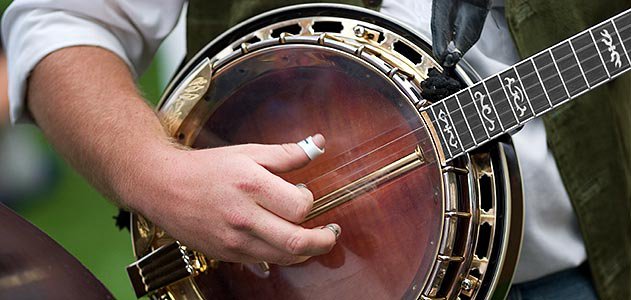Banjo Music provides an amazing musical journey. This genre-spanning genre draws influence from folk, rock and classical styles alike.
Long ago and even today there are numerous styles used for 5-string banjo playing; some methods still exist today. Since the Folk Revolution in the 1960s however, down-picked clawhammer style has become the predominant approach.
Origins
Banjos have an ancient history. Since they first appeared, people have used banjos in Africa, Asia and the Caribbean regions for thousands of years.
The American banjo emerged as a result of musical influences originating from both Africans and Europeans settling the New World. Originally it began life as a folk instrument made from gourds and sticks.
Over time, this instrument became much more sophisticated and became part of Southern culture.
Early American banjos were constructed using gourd or wood bodies fitted with skin heads and stick necks, later altered by adding one string and becoming what we know today as five-string banjos.
Styles
Banjo music is a versatile genre. From Bluegrass to Country Ballads to Dixieland jazz, its genre-spanning nature allows musicians to experiment in many different styles.
Banjo for sale first gained widespread recognition as part of Black American traditional music and rural white folk culture before entering mainstream shows during minstrel shows in the 19th century. Later it became a staple of old-time American music from Appalachians to traditional (“trad”) jazz music genres.
Early banjos featured smooth stick necks without frets and strings made from cat gut. Steel strings were first introduced around 1870. By the early 20th century, banjos had become an instrument widely played by dance and jazz bands.
Finger-style banjo players typically employ medium action strings with medium tension for optimal sound production, creating an effortless sound with minimal tension between notes. Resonance chamber thickness plays an integral part in how it sounds; thickness determines its sound.
Techniques
Banjo music can be performed using various techniques, including hammer-ons and roll-ons.
At first, beginners often struggle to develop their technique. This could be caused by insufficient practice or due to not creating routines designed to advance their abilities.
Purely Banjo offers more than 90 practice routines designed by professional musicians to maximize your practice time. Each routine will help improve your technique from day one.
Clawhammer banjo style is an exceptional and eye-catching way to play the banjo that allows you to stand out among other string instruments. By using this technique, you can play more intricate scale patterns on the banjo while making fluid rolls across all five strings.
Music
The banjo is a stringed instrument capable of producing various genres of music, from bluegrass and clawhammer blues to country and folk.
Early banjo-like instruments were made from split gourds covered with animal skins stretched over them and string made from gut or vegetable fibers; these instruments were widely used among enslaved populations throughout Africa and North America from the 17th century onwards.
Four-string banjos are commonly employed in several genres of music, including bluegrass, folk, jazz and ragtime. Their fifth (thumb) string often stands out in these styles and is frequently utilized to produce different sounds; additionally it should be noted that its tuning may differ by up to four fourths from that of its counterparts.

